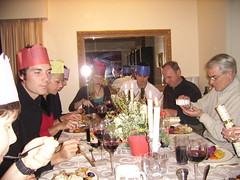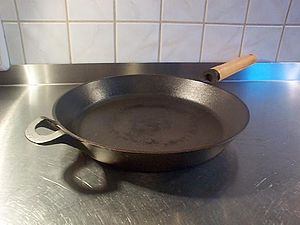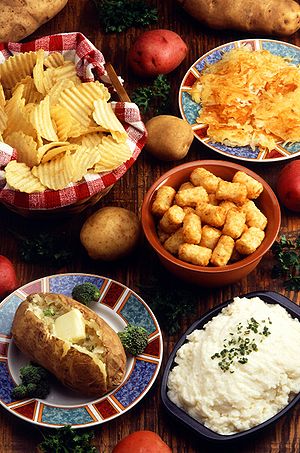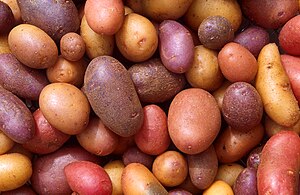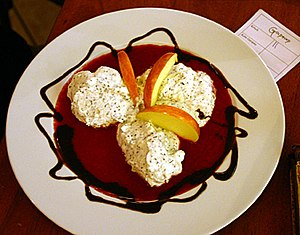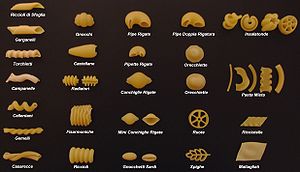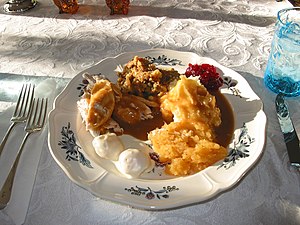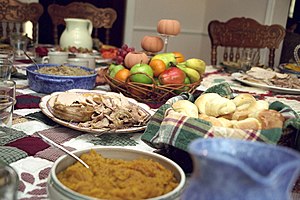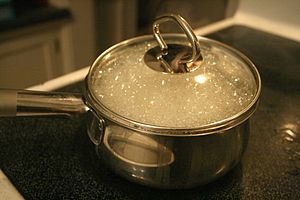Below, you'll find some myth busters on healthy eating.
1. Working out on an empty stomach.
If you hear a rumbling noise in your stomach, your body is trying to tell you something. By not listening to it, you are forcing your body to run without any fuel. Before you exercise or do any physical activity, always eat a light snack such as an apple.
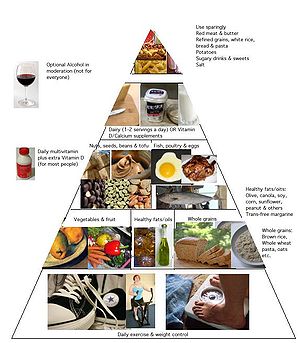 Image via Wikipedia2. Relying on energy bars and drinks.
Image via Wikipedia2. Relying on energy bars and drinks.Although they are okay as a special treat every once in a while, they don't deliver the nutrition or antioxidants you need to prevent cancer and other diseases, and are often loaded with sugar, artificial preservatives and colors, and other unhealthy things. Fruits and vegetables are your best bets, as they are loaded with vitamins, minerals, fluid, and fiber.
3. Skipping breakfast.
Skipping breakfast is never a good idea, as breakfast starts off the day's activity on a nourishing note. Your body needs fuel as soon as possible, and without it, you'll be hungry or lack energy throughout the day.
4. Low carb diets.
Your body needs carbohydrates for your muscles and the storing of energy. The trick is to eat healthy carbohydrates, such as fresh fruits and vegetables, and don't load up too heavily on processed carbs such as white flour and sugar.
5. Eating what you want.
Eating healthy and exercising doesn't give you an all-access pass to eat anything you want. Everyone needs the same nutrients whether they exercise or not, as well as plenty of fresh fruits and vegetables!
6. Not enough calories
Although losing weight involves calories, losing it too quickly is never safe. You want to aim for 1 - 2 pounds a week - not more than that. Always make sure that you are getting enough calories to keep your body and its systems operating smoothly. If you start dropping weight too fast, eat a bit more often or add a few more calories to your daily intake.
7. Skip soda and alcohol.
Water, milk, and juice are the best things for active people to drink. You should drink often, and not rely on thirst to be an indicator, especially if you are not used to drinking enough. By the time you get thirsty, your body is probably already running a bit too low. Once you get used to hydrating regularly, your body will kick up the thirst "thermostat", and you will notice yourself becoming thirsty more often.
Changing how you eat is always a great step towards healthy eating and it will affect how your body performs. The healthier you eat, the better you'll feel. No matter how old you may be, healthy eating is something you should strive for. Once you give it a chance, you'll see in no time at all just how much it can change your life - for the better.
Make a resolution to eat healthy this year, and check back here often for easy and healthy recipes! (Don't worry - your tastebuds won't suffer, and we'll be sure to throw some special treats in from time to time as well.) You can also visit http://www.newholisticliving.com/cookingfromscratch.html for some more ideas.
Healthy Eating Resources:





